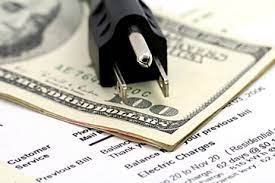Imagine waking up on a chilly winter morning, the frost painting patterns on your window, and reaching for your latest energy bill with a sense of dread. That’s exactly what happened to Sarah, a single mother of two from a bustling suburban neighborhood. Last year, her monthly heating costs had skyrocketed, leaving her scrambling to make ends meet. But through a series of smart changes—insulating her home, switching to efficient appliances, and adopting simple daily habits—Sarah discovered the secret to slashing her expenses dramatically. This isn’t just her story; it’s a blueprint for anyone looking to achieve Energy Bills in Half
-
.
Understanding Your Energy Consumption
Before diving into solutions, it’s essential to grasp where your energy dollars are going. Most households waste up to 30% of their energy on inefficiencies, from drafty windows to outdated lighting.
Common Sources of Energy Waste
Identifying leaks in your home’s energy use is the first step toward Energy Bills in Half. For instance, poor insulation in attics and walls can let heat escape, forcing your HVAC system to work overtime. Appliances like old refrigerators or water heaters also contribute significantly, often running inefficiently and spiking your bills.
Tools for Tracking Usage
Smart meters and apps can provide real-time insights into your consumption patterns. By monitoring peak usage times, you can adjust habits, such as running dishwashers during off-peak hours, to optimize savings.
Home Insulation and Sealing Techniques
One of the most effective ways to reduce costs is by fortifying your home against energy loss. Proper insulation acts as a barrier, keeping your indoor climate stable without over-relying on heating or cooling systems.
Upgrading Insulation Materials
Consider adding fiberglass or foam insulation to key areas like attics and basements. These materials trap air effectively, reducing the need for constant temperature adjustments and paving the way for Energy Bills in Half.
Sealing Doors and Windows
Simple DIY fixes, such as weatherstripping around doors and caulking window frames, can prevent drafts. These low-cost measures often yield immediate results, with many homeowners reporting a 10-20% drop in energy use.
Energy-Efficient Appliances and Lighting
Investing in modern appliances isn’t just about convenience—it’s a smart financial move that compounds savings over time.
Choosing ENERGY STAR Certified Products
Look for the ENERGY STAR label when replacing refrigerators, washers, or dryers. These devices use up to 50% less energy than standard models, directly contributing to lower bills.
Switching to LED Lighting
Replacing incandescent bulbs with LEDs can cut lighting costs by 75%. LEDs last longer and produce less heat, reducing the load on your cooling system during warmer months.
Smart Home Technologies for Savings
Technology has revolutionized energy management, offering automated ways to curb waste without sacrificing comfort.
Installing Smart Thermostats
Devices like Nest or Ecobee learn your schedule and adjust temperatures accordingly, potentially saving 10-15% on heating and cooling annually.
Integrating Solar Panels and Batteries
For long-term gains, rooftop solar installations paired with home batteries can offset grid dependency. Incentives like tax credits make this more accessible, accelerating your path to halved bills.
Behavioral Changes and Daily Habits
Sometimes, the biggest impacts come from small, consistent actions that don’t require any upfront investment.
Optimizing Heating and Cooling
Set your thermostat a few degrees lower in winter or higher in summer—each degree can save 1-3% on bills. Use fans or natural ventilation to enhance comfort without extra energy.
Unplugging Phantom Loads
Electronics in standby mode, like chargers and TVs, draw power unnecessarily. Use power strips to cut off these “vampire” loads entirely.
Financial Incentives and Rebates
Governments and utilities often provide support to encourage energy efficiency, making upgrades more affordable.
Exploring Tax Credits
Programs like the federal Residential Clean Energy Credit offer rebates for solar, insulation, and efficient windows, reducing the net cost of improvements.
Utility Company Programs
Many providers run audits or rebate schemes for energy-saving upgrades. Contact your local utility to see what’s available in your area.
Conclusion
Achieving Energy Bills in Half is within reach through a combination of home improvements, smart tech, and mindful habits. Like Sarah, who now enjoys financial breathing room and a cozier home, you can transform your energy story. Start with an audit of your current usage, implement a few key changes, and watch the savings add up. Remember, every step counts toward a more sustainable and budget-friendly future.
Pinterest  :
https://www.integratesun.com/
:
https://www.integratesun.com/
 :
https://www.integratesun.com/
:
https://www.integratesun.com/
Service/Product Details:
https://www.integratesun.com/

